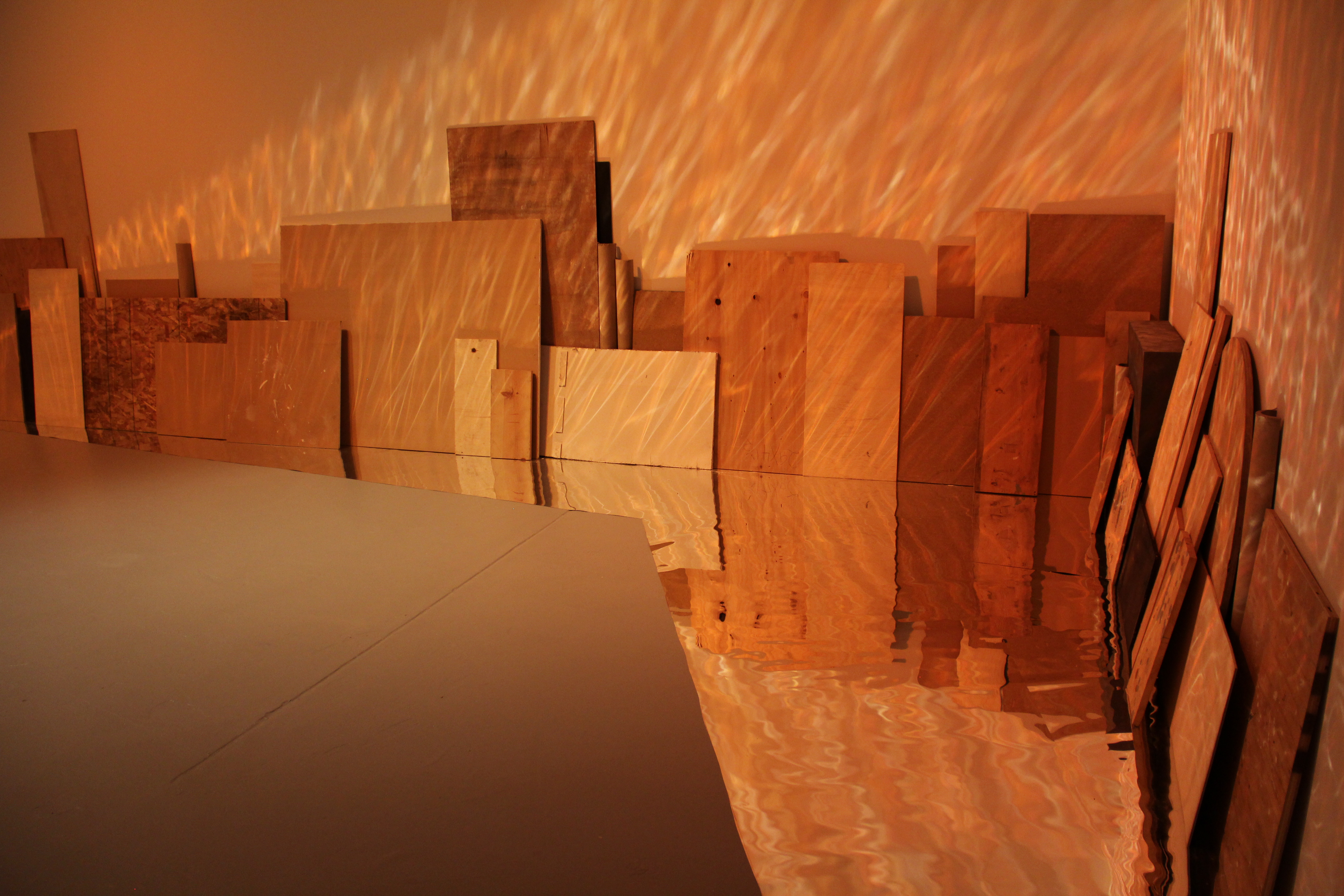We know it doesn't open until November, but we can no longer contain our excitement for "The Shadows Took Shape," the interdisciplinary, Afrofuturist exhibition coming to The Studio Museum in Harlem.
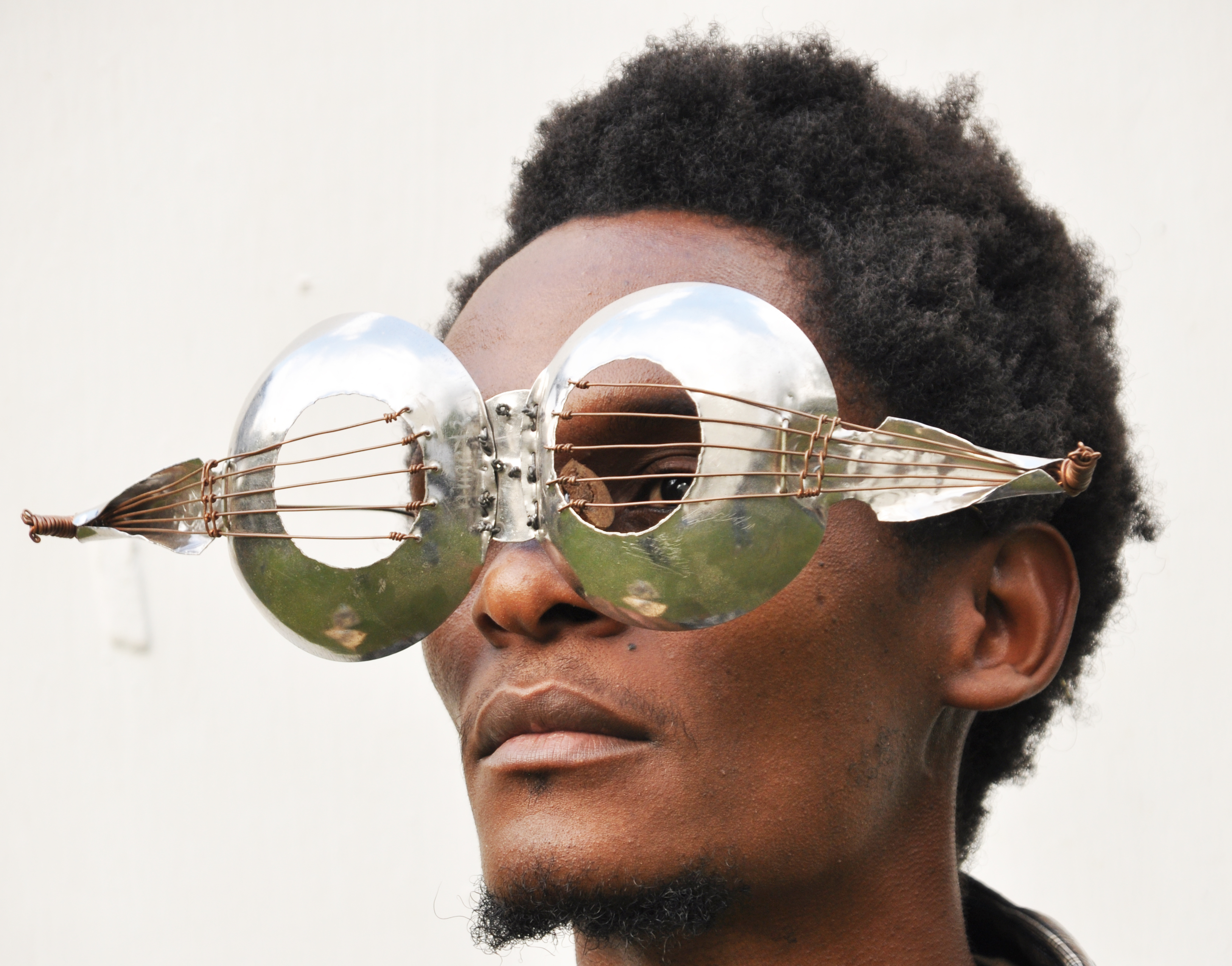
Cyrus Kabiru. African Guitar (from the C-Stunners series), 2012. Courtesy the artist.
The exhibition title comes from an obscure poem by Sun Ra, an avant-garde poet and sound innovator who made waves in the 1960s and 1970s with his interplanetary theatricality, sci-fi philosophy and experimental electronic music. Like Sun Ra's work, the art exhibition follows themes of race and art into their future possibilities, weaving together textured and fantastical possible worlds.
"The Shadows Took Shape" features 29 artists including Wangechi Mutu, The Otolith Group, Robert Pruitt, Saya Woolfalk, Laylah Ali, Sanford Biggers and Sun Ra himself. Some artists identify explicitly with the themes of Afrofuturism, while others explore parts of it through their own artistic mission. Issues of racial identity, time and space, and a utopian future take shape in the twisted visions of some of today's most imaginative contemporary artists. Sounds good already, right? We reached out to curators Naima Keith and Zoe Whitley to learn more. Scroll down for images.
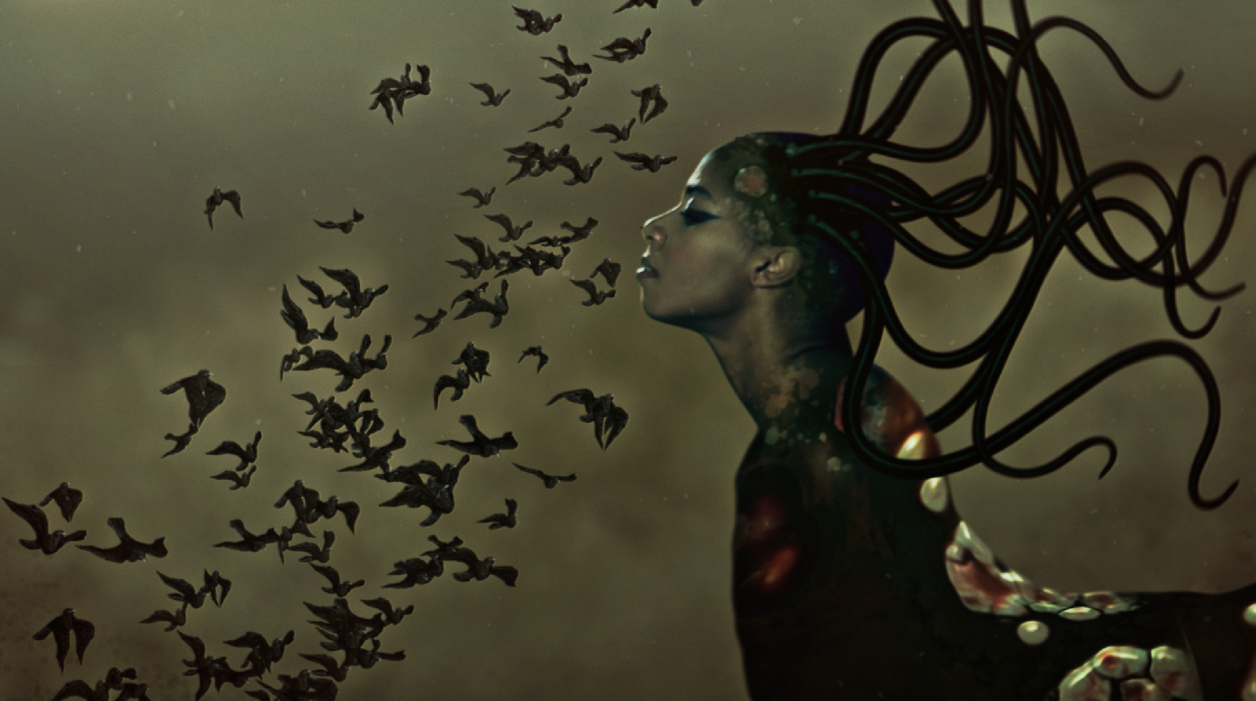
Wangechi Mutu, The End of Eating Everything (video still), 2013. Courtesy the artist
How would you describe Afrofuturism to someone who has never heard of it before?
Naima Keith: What we really liked about Afrofuturism is it has morphed into all different things. Mark Dery coined the phrase in 1994 -- basically he wrote fiction that examines African American themes and concerns in the context of 20th century techno-culture, appropriating technological imagery into an enhanced future. How does one conceive of race in the past, present and future? How do race, gender and ethnicity get discussed in everything from Janelle Monáe to "The Invisible Man." The actual term "Afrofuturism" didn't come into existence until 1994 but artists like Sun Ra have been working with these themes since the '60s or '70s.
What were some of the challenges you faced putting together this exhibition?
Zoe Whitley: The biggest challenge, as you might expect, has been curating on two different continents and working with artists across three. It's very fitting for an exhibition where time and space are so crucial... Still, I think the distance has only made the exhibition richer: there's a real harmony in the artistic viewpoints in the show as well as the critical positions in the catalogue.
How did you go about choosing artists for the show?
NK: Zoe and I have been friends for a long time. We just started to notice a number of shows engaging with this topic where we were thinking Hmm... I wonder why so-and-so wasn't included. How do artists of non-African descent use Afrofuturism as a source of inspiration? Even if you don't necessarily call yourself an Afrofuturist, how do these ideas play out in your work and how does that complicate the conversation? We started looking at contemporary figures like Janelle Monáe or Andre 3000 or Erykah Badu who look to otherworldly themes for inspiration as well.
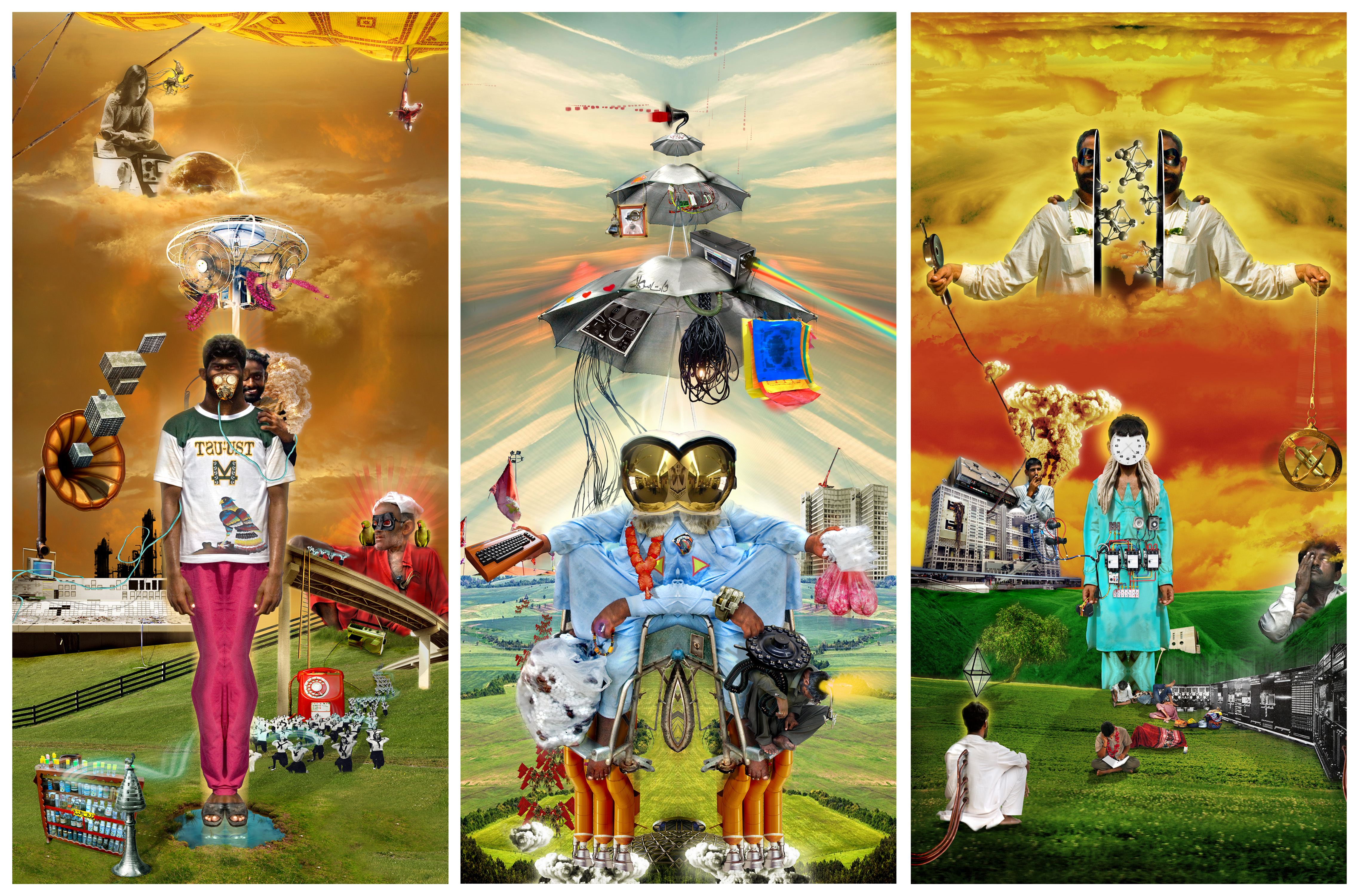
Mehreen Murtaza, Triptych, 2009/2013. Courtesy the artist
Are there any film/music/literary sources you would recommend we check out before seeing the show?
ZW: John Sayles' "The Brother From Another Planet," Sun Ra's "Space Is The Place," and John Akomfrah's "The Last Angel of History" are all classics of the genre. We're so excited to be featuring John Akomfrah's cinematic vision in the exhibition. His eye has taught me so much, not only about Afrofuturism but also introduced me to the beauty to be found in many other places, such as in the cinema of Russian filmmaker Andrei Tarkovsky.
In our exhibition catalogue, Alondra Nelson refers to the seminal Star Trek episode "Plato's Stephchildren" (1968) featuring a kiss between Captain James T. Kirk and Lieutenant Uhura, the first interracial kiss on US television. There's also the subsequent year's "Let That Be Your Last Battlefield" (1969) which I distinctly remember seeing as a re-run as a child in the 1980s: Lokai and Bele are two -- literally -- half-white, half-black aliens, but their color separations are mirror images of one another. The final scene reminded me so much of Dr. Seuss' "The Butter Battle Book" (1984) and both had a profound impact on me about race and intolerance at a young age. Maybe I was a strange kid...
What about music-wise?
ZW: From a music standpoint, I want nothing more than to make you a mixtape, though I suppose a list of artists you can check out on Spotify is the way to go: Sun Ra, Parliament/ Funkadelic, Lee Scratch Perry, Alice Coltrane, Betty Davis, Carlinhos Brown (Brazil), Digable Planets, Shabazz Palaces, Major Lazer, Janelle Monae, Erykah Badu, OutKast (especially ATLiens) and subsequent Andre 3000, Just A Band (Kenya), Spoek Mathambo (South Africa), Thee Satisfaction, DJ Spooky... There are so many!
Why is this show relevant now, particularly?
NK: I think over the years we just noticed a number of shows on this topic, and wanted to throw our names in the hat. Zoe noticed how most of the sci-fi or Afrofuturist shows were lacking an international conversation. Given the hotbed activity it was a good time to get ourselves involved. It didn't seem overly done; there was still room to add to the conversation. It just seemed like a perfect time, a bubbling of activity and an ongoing work.
Who is one artist you're particularly excited to showcase?
ZW: Asking that of a group exhibition curator feels like asking a parent to choose a favorite child. I respect each artist so profoundly and have admired so many of them for years. It's a rare thrill to be looking forward to an exhibition as much conceptually as experientially: it is genuinely a show I want to see and experience as
a viewer. In the documentary "Dave Chapelle's Block Party," a number of musicians talk about how they are taking part in making the show happen but also fans of the other performers in their own right. That's really how I feel. I'm most excited to see how the works when juxtaposed will "speak" to one another. What new dialogues might open up? The Shadows Took Shape has been a collaboration in every way: not only between Naima and me, but with the artists collectively.
Kira Lynn Harris, Some Blues… (installation view), 2012. Courtesy the artist. Photo: Andrea Bowers and Kira Lynn Harris
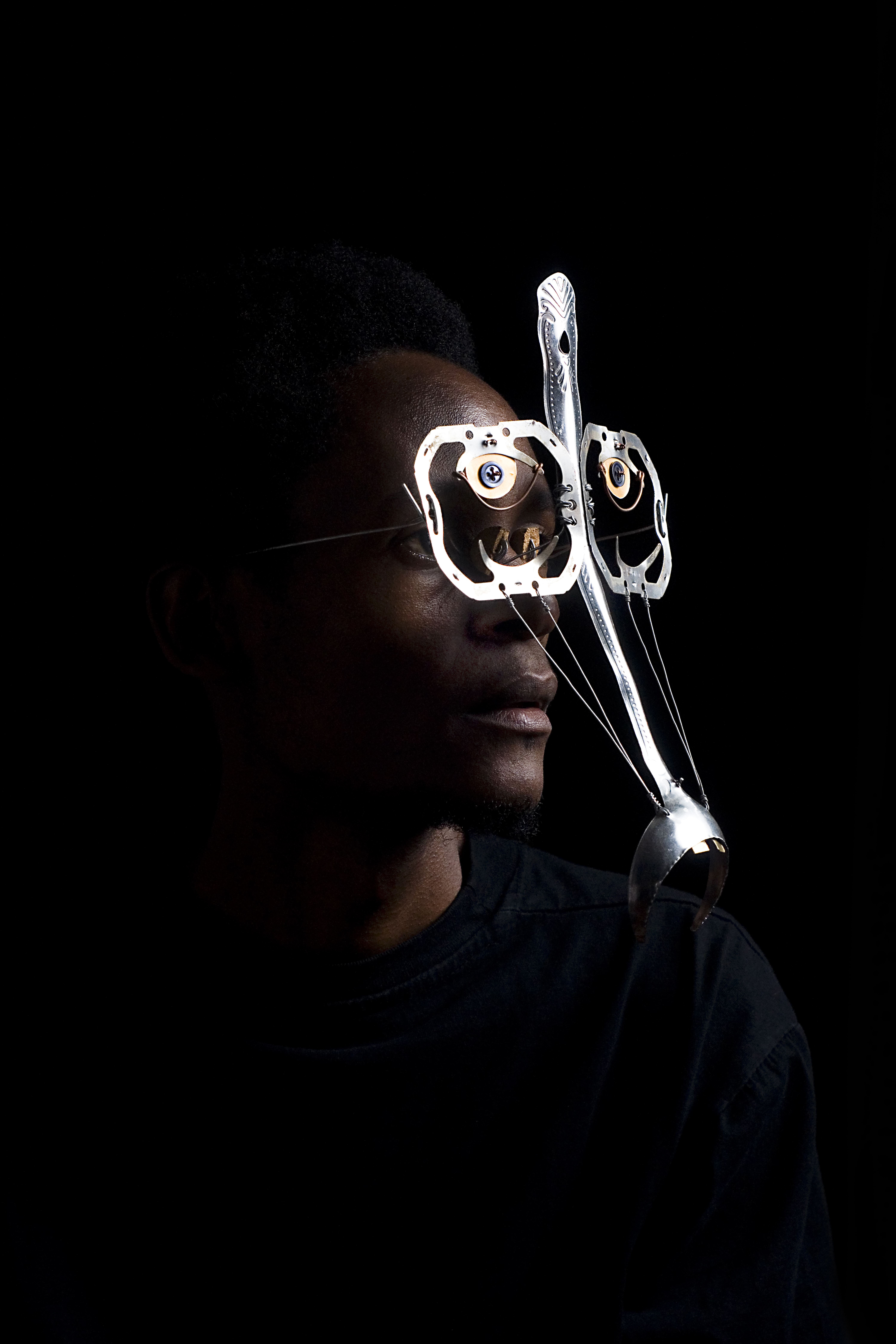
Cyrus Kabiru. Nairobian Baboon (from C-Stunners series), 2012. Courtesy the artist. Photo: Amunga Eshuchi
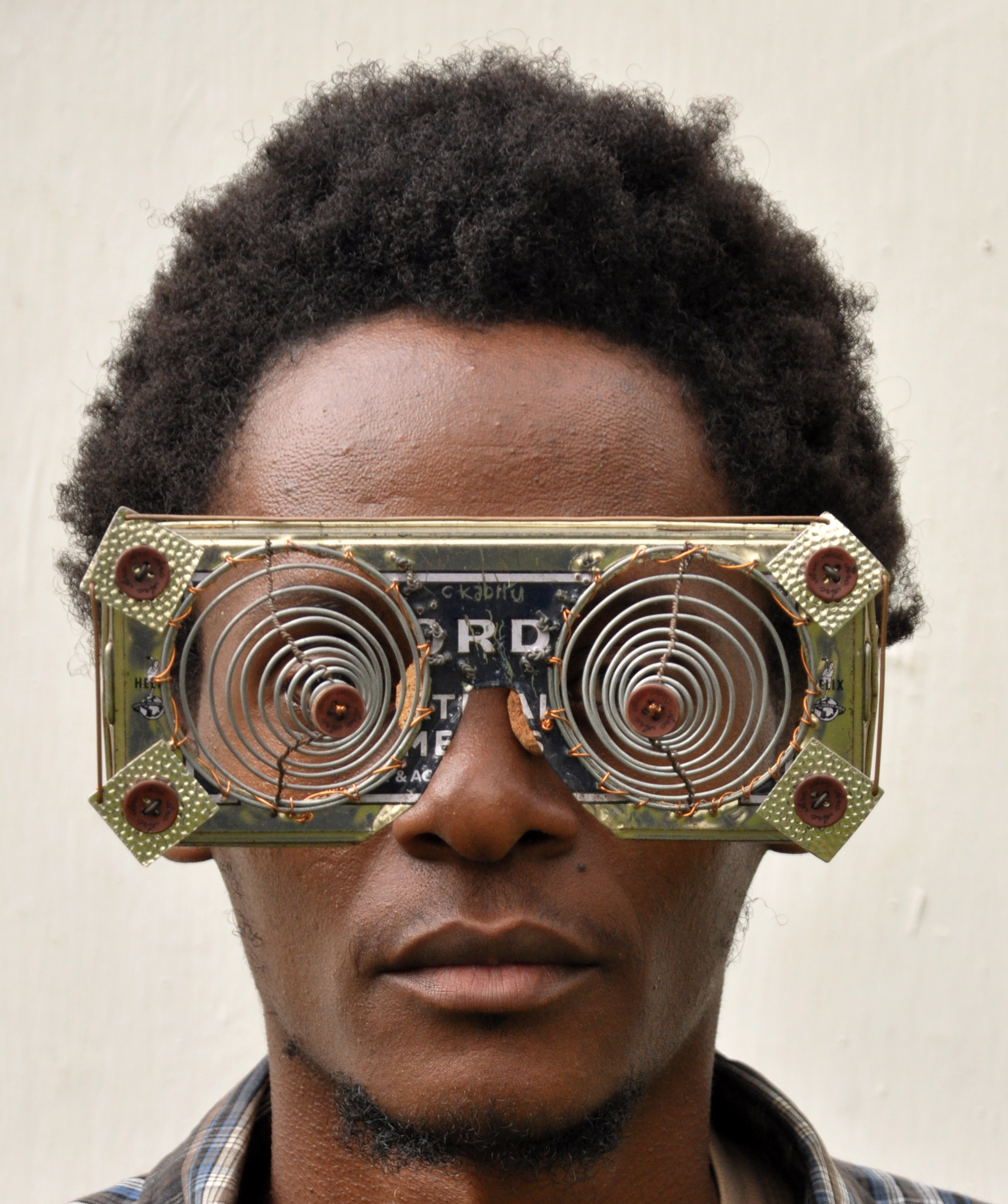
Cyrus Kabiru. Oxford Boobs (from the C-Stunners series), 2012. Courtesy the artist
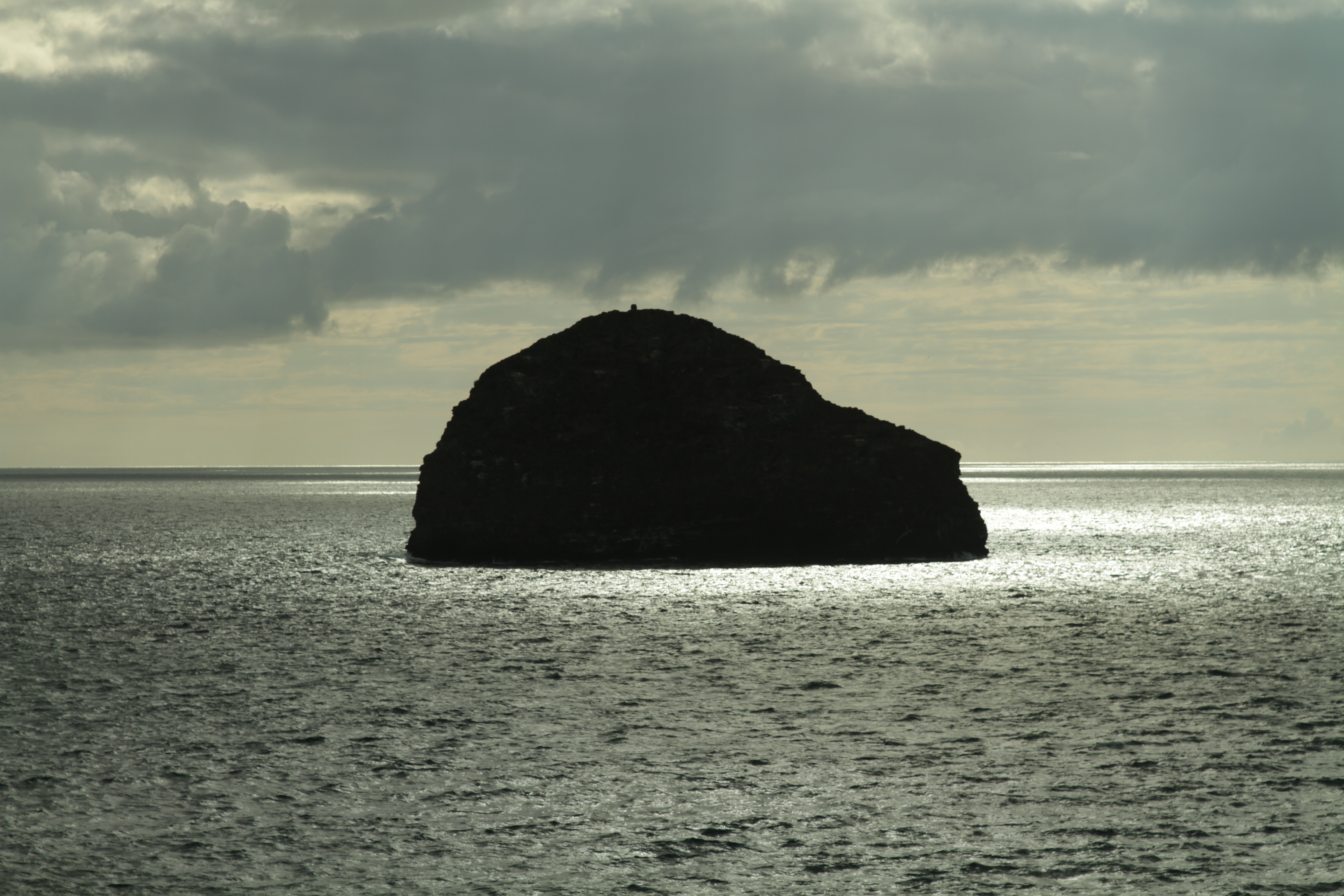
The Otolith Group, Hydra Decapita (film still), 2010. Courtesy the artists

Wanuri Kahiu, Pumzi (film still), 2009. Courtesy the artist
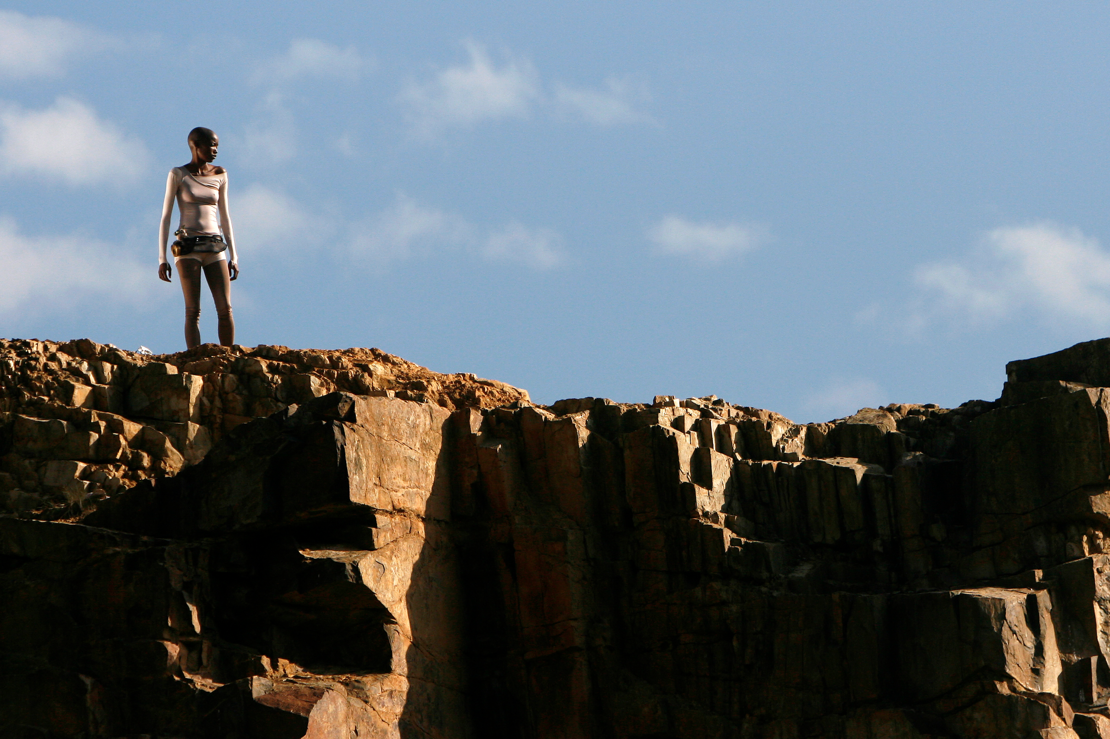
Wanuri Kahiu, Pumzi (film still), 2009. Courtesy the artist
"The Shadows Took Shape" will run from November 14, 2013 until March 9, 2014 at The Studio Museum in Harlem. Start making that Spotify playlist now.
